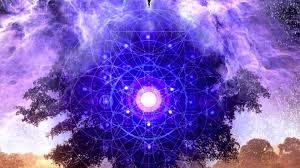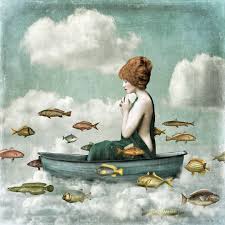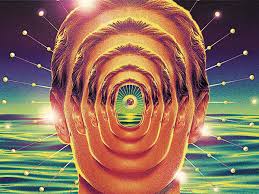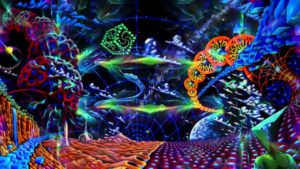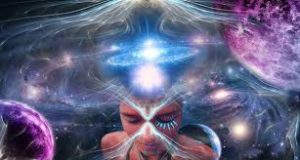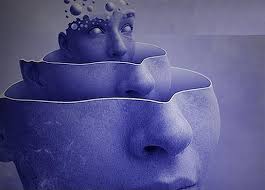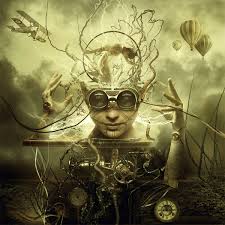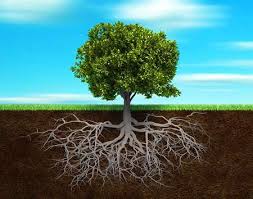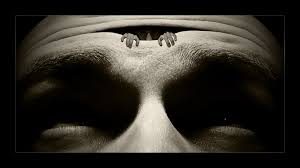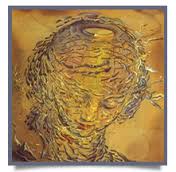Even when we admit the inspirational and supportive nature of dreams, even when we learn to recall dreams and apply them to daily life, we still only begin to glimpse their multidimensional reality. Dream interpretation is important to our three-dimensional mentalities, for example. We believe in utilization; if dreams can’t be useful, then what good are they? Dreams can give us consistent, valid information about our motives, needs and decisions. They can be utilized as very practical aids to daily life. But this is only a portion of any real exploration of dream reality.
Dream investigation or manipulation as an aesthetic pursuit — as an art, embarked upon for its own sake — this is something else again and is sometimes because of its solitary nature. Yet the fact remains that there is a dream reality with a “structure,” “landscape” and images that appear to be made of matter — but matter that obeys different rules than those with which we are familiar.
Dreams are not just psychological events. There is a dimension of reality (an “objective” dimension, if you prefer) in which all dream events happen. There are rules: I call them root-assumptions that operate in all realities, our own included. We have to learn what root-assumptions govern dream reality. I know that we can on occasion manipulate dream events; my blogs readers and I do it frequently. If we follow certain “rules” given to us, we will get more or less predictable results in the dream state — an indication that an “objective” dream dimension exists quite independently of us or our dreams, a dream dimension in which my dreams and yours have their being.
Just reading such ideas will never convince you of their validity. All true knowledge must be directly experienced; therefore I will include throughout my blogs instructions and suggestions for dream recall, investigation and manipulation.
If we ever hope to “map” the dreamscape, we need a million trained dreamers: a million individuals trained to use dreams as vehicles and then, courageously, to leave them to explore the environment in which they find themselves. We need people able to distinguish between the environment-within-the-dream and the far vaster environment (or atmosphere or medium) in which these dream-places exist.
Records of individual dreams are not enough, nor are studies of the physiological effects of dreaming. Most psychologists would not admit the existence of a definite structured universe in which dream acts, rather than physical acts, happen. Therefore, at this time, they will not consider dreams in this larger context. We will understand ourselves as dreamers only if we are also aware of the larger environment in which dreams take place, that we interact in the dream state as we do in the waking one and that we form mass dream events as we form physical events on a mass basis.
Because we must start somewhere, however, we will begin with dream recall and those practical aspects of dream investigation that let us use our dreams in daily life. For one thing, I use this method to lead my blog readers into dream reality. This is a gradual process that gently leads the ego into largely unfamiliar territory and at the same time encourages flexibility of consciousness.
My next few blogs will include the general nature of dream reality, dream investigation and recall and will be followed by a series of blogs on various kinds of dreams captured by some of my blog readers as we check out some of my theories, as far as we are able. Later, we will journey further into the inner dimension in which dreams take place.
The whole idea of deliberate dream recall is not new. The methods are not new. I’ll paraphrase them here: Simply buy a notebook to be used exclusively for dreams. Keep it with a pencil or pen by your bed. Before you fall to sleep at night, give yourself this suggestion: “I can remember my dreams and write them down in the morning.”
You will find that your dreams actually are in your mind when you awaken. Write them down at once, before getting out of bed. If you have a tendency to scribble, then use loose sheets of paper and later transcribe them in the notebook. Don’t worry about neatness, but concentrate on capturing as much of the dream content as possible. If you recall several dreams, jot down a quick sentence about each, then add the details. Leave space after each entry for future notes.
This method is really easy and workable — but it can be sabotaged. One of my blog reader, had great difficulty remembering her dreams until I discovered that she was using a clock radio to awaken her in the morning and the news happened to be on. The dreams must be recalled before you become mentally involved with the world’s activities.
If you have remembered only unpleasant dreams in the past, you may have built up a block against recalling any dreams at all.
The unseen self is not a dungeon of repressed ideas and feelings, dangerous to behold, but the fountainhead of individual existence, upon which our present physical survival is dependent. Beyond this, it is our pathway to creative expression, inspiration and wisdom — a doorway to our own greater identity. This does not mean that we do not repress fears and desires beneath consciousness. It means that we must allow ourselves greater flexibility, look into ourselves, admit the fears and release the energy used in repression. As you will see in later blogs, dreams can often release such repressed material for your conscious examination.
The method of dream recall just given will allow many people to remember more dreams in a month than they previously did in their entire lives. Variations will occur, however. Periods of excellent recall are sometimes followed by poorer ones, and each individual seems to have his or her own cycle of significant activity.
A recorder app may also be used, of course. You must still play back the app recorder and transfer the dreams into a notebook, however, so that the records are easily accessible. This actually takes more time, but many people prefer to speak their dream recollections into a recorder app at once, rather than to write them down.


















